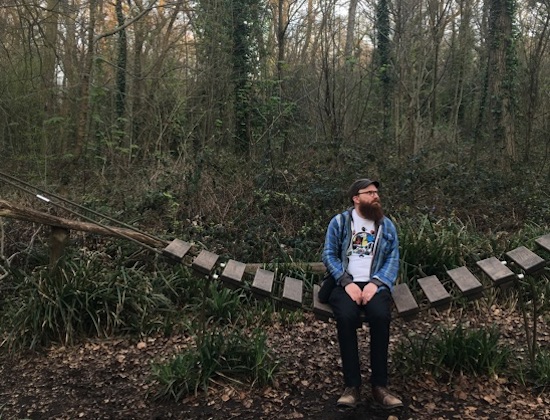Simon Moreton will be familiar to readers of tQ’s comics coverage as one of the UK’s foremost small press comics creators, whether familiarity comes from his self-published works or the books he’s released with publishers here and in the States including Avery Hill, Kilgore and Uncivilized. For the last three years he has been concentrating on Minor Leagues, the seventh of which was published earlier this year on his own Lystep Lettuce imprint. It’s an exceptionally fine series, rich in humanity and confidently expressed across a variety of media, and one of the most rewarding things you can spend a few quid on right now. He and I chatted over email, discussing what the series means to him.
To begin, why did you decide to end your long-running SMOO series and to launch Minor Leagues?
I started SMOO in 2007. I’d make these autobiographical comics, then compile them into little booklets. I printed the first issues on the photocopiers at work, sneaking in at 11pm on a Friday. I’d then flog them online or at comic fairs. I had a lot of fun doing it, and learned so much. But by 2015 my life had changed and so had my ambitions. I wanted try out new things – prose, photography, poetry, collage, silly stuff, serious stuff, different kinds of comics – and decided the best way to do that was to start again. I put out the tenth issue of SMOO in 2015 and started Minor Leagues in 2016.
The first work of yours I read was the Days collection from Avery Hill, and then some of the later SMOO. I remember thinking the production values were pretty high, a long way from the photocopier at work scenario. With the first issue of Minor Leagues I was struck by the difference: less refined looking, cheaper paper stock and very DIY production, but so much more content for the money. Would it be fair to say you are currently more interested in the content than the physical reproduction values, perhaps a return to your roots?
If anything, I am actually now more interested in physical reproduction values than I was before. That started when Uncivilized Books put out a book I did called Plans We Made in 2015. It was a sort of teenage memoir. The design job the publishers did was great. The paper stock is rough, thick off-white paper somewhere between cheap 1960s paperback and art book. It feels like a phonebook and keepsake. I realised seeing this book for the first time that the way I packaged my work said something about me, too, and that I should give more thought to that.
Minor Leagues was a return to first principles. I knew I wanted to make everything at home, which was both a financial and an artistic decision. I bought a laser printer and a guillotine. I wanted to make the best thing I could with the materials I had to hand. It’s lo-fi, yes, but I am interested in making it hi-lo-fi where possible. Every issue is handmade. The paper stock is usually carefully chosen, but sometimes its quality is limited by how much money I have available. I’m exploring more and more work that walks this boundary between the homemade and the art book and the personal/historical – people like Saffa Khan and her Tender Hands Press, the stuff Esther McManus is doing with historical text and stuff, are great examples. Adam Void based in North Carolina is another. His zines represent a very beautiful, rough, assembled aesthetic that speaks of both care and chaos. I love that.
Days, which collects issues 4–6 of SMOO and some other comics from that period, reflects a different phase. That work about bright white paper and minimal designs. I was riffing hard on John Porcellino’s King Cat at that time, which is a long-running comics-zine that has a very specific black and white look and feel. I love John’s work so much, but knew I’d have to carve my own path sooner or later.
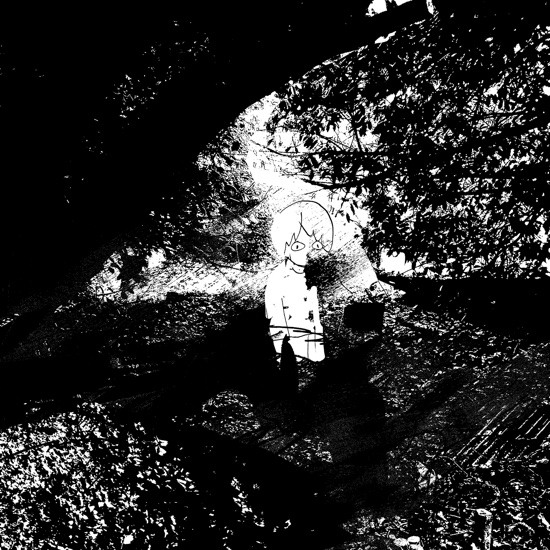
The proportion of Minor Leagues that looks like it could belong in SMOO has gradually decreased, matched by a noticeable increase in prose content. What prompted this, and what can you say through prose that you couldn’t through drawing?
I’m trying to find the best way to relate a certain kind of experience to people, hoping that they may relate to, or in some way feel comfort from, having that experience related in that way. I’m a big believer in following your nose and making work that responds to where you are now. It’s one of the things that makes me a shit cartoonist, in some respects: I am not consistent in the look and feel of my work. I take on new influences and try out stuff. This is partly because I’m curious and partly because I’m resisting doing something the ‘way I’m supposed to’. Warren Craghead’s approach to drawing taught me that. He’s an amazing artist – currently drawing Donald Trump every day in horrendous caricature – but one who has drawn and made a range of beautiful work that defies characterisation. Brigid Elva is another artist who muddies the comics/drawing/illustration/text/image waters.
Most of your work appears to be only available in physical formats, with neither Minor Leagues nor SMOO available as downloads. Do you think something is lost when consuming comics on a screen?
I’m not particularly anti-digital, but making zines is partly about physicality. When you make a zine and hold it in your hands, you’re in control of what happens to it in a way you’re not when you’re posting work to a third-party platform like Tumblr or WordPress. Also, most platforms for screen reading tend to be very linear – scroll, click to the next page. A lot of comics work well in that format, but I’m not so sure mine do. What’s nice about physical books is that they allow the reader to skip backwards and forwards, read and re-read organically. You can design pages and spreads to use aspects of layout, negative space, as tools for storytelling, like pacing, rhythm and so on. You can demand certain things of the reader – particularly attention – and offer them portability, tactility. I’m sure you can replicate or reimagine some of that with digital technology, but I can’t with my 1996 HTML skills. It just turns out that the technology of the book, thousands of years later, is still the most appropriate for me.
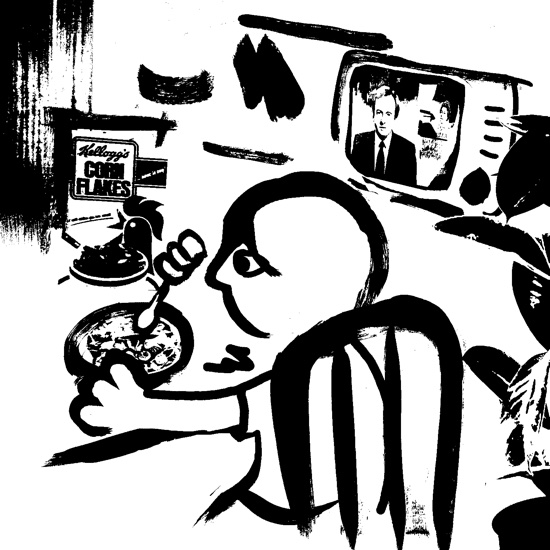
Do you draw digitally, and has this changed over time?
I tend to draw very quickly, with pencil, just on standard printer paper. It makes me feel good to draw. It always has. I don’t get that with digital drawing which for me feels very different. I do, of course, use computers, although up until recently, I did very little digital work beyond the odd bit of cleaning up a scan – erasing a smudge, or fixing a spelling error. But for Where? the new book project, my process has become a bit more involved. I still draw in pencil, and pen, but I’ve also starting messing around with children’s poster paint. I then scan all the elements in and digitally assemble them. I guess I’m approximating the approach of cutting and pasting and repeatedly running things through the photocopier again and again and you don’t really know what the machine will spit out. It’s very trial and error and deliberately not over-thought.
I’m interested that you say inconsistency of look and feel might be taken to be the hallmark of a bad cartoonist. Certainly we don’t have this expectation of stylistic conformity in music, and artists I’ve been listening to recently from Bowie to King Gizzard have often produced albums that are substantially different from their predecessors. At the same time, many cartoonists produce work that is instantly recognisable (and I’d include much of your output in that list). Do you think this is something the market demands, and what is allowing you to go the other way?
I was actually thinking of the Charles Schultz quote that “a cartoonist is someone who has to draw the same thing every day without repeating himself” which speaks to certain forms of cartooning where consistency is an important part of the visual language. Would Charlie Brown be so relatable if he looked different in every panel? That’s a branch of cartooning I admire, but I’m not part of. But thinking about comics as a language of symbols – some of which are words, and some of which are drawings – what is interesting to me is how you put them together. In that sense I’m much more interested in experimentation and expanding my visual vocabulary, so that I have a range of approaches for conveying emotion or narrative or whatever. I’m not really interested in conversations about ‘what is and what is not a comic’.
As for what the market demands, on the one hand, there are people who like my work, and there are people out there who might like it that I can’t reach; in that sense, there’s a market. But if we think of a dominant, mainstream distribution system that pretends to be equitable but is based on a version of ‘taste’ mediated by capital, private interest, big business, media platform deals etc. which distorts and shapes and restricts what we can and can’t see, posing as ‘the market’ I definitely don’t care about that.
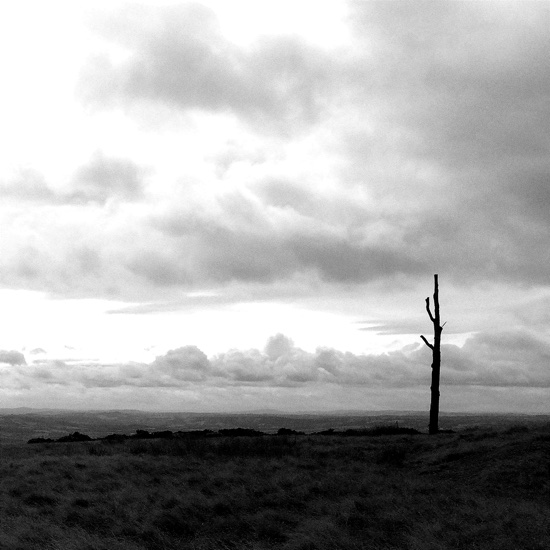
I think it’s pretty fair to say you have expanded your vocabulary in Minor Leagues. Do you think this is in part due to some of the things you have experienced in recent years, such as bereavement, which features substantially from issue 2 onwards?
Minor Leagues was a response to intense personal change: in the space of a few years, a nine year relationship came to an end, I developed a low-grade alcohol problem, a shitty bit of mental health; I met my partner, then at the same time, questions about mortality suddenly swelled up, the excitement and fears that come with being newly in love. In 2016 there was a lot of public discourse about death in relation to celebrities. My grandmother had died in August, Ali’s grandfather a few months before that. All this stuff compelled me to ask myself, personally, professionally, artistically, who am I? What next?
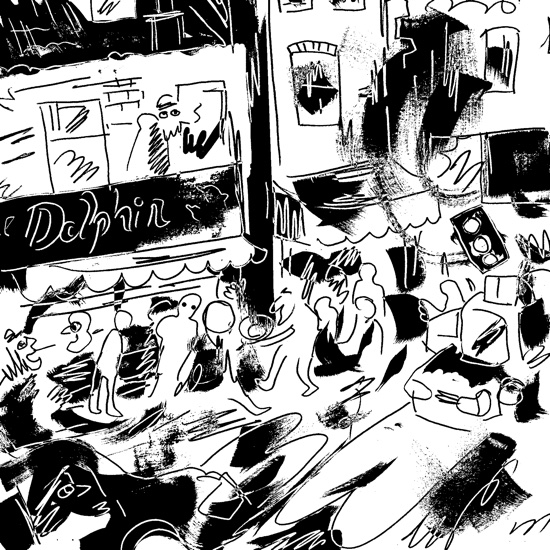
It seems like you are very honest about how these things have made you feel. In Minor Leagues 3, for example, there’s a sense that you are struggling to be able to express yourself, that something has changed for you but everything else about the world and the cycles of nature is just the same, and the scales haven’t settled for you yet as these things try to reach equilibrium.
I guess that is inspired by the zine community in that sense, where publications like King Cat, Ghost Pine, Doris, Dirty Plotte, Laterborn, were documenting the makers’ experiences in a very direct, unmediated way. I think it’s a political act, to be vulnerable, to find strength in transparency and the connections you can make from honesty.
As for Minor Leagues 3, my partner’s father was diagnosed with cancer almost as soon as I started working on it in November 2016. By the end of January 2017 my own Dad was diagnosed with stage IV lung cancer that had spread to his liver and bones, and by the beginning of March he had died. I wrote and drew it all during those months, and I’m not surprised it reads in the way you describe.
That’s a lot of mortality to encounter in a short period. I’ve noticed nature themes more prevalent in your work in recent years, too. What brought this to the fore in your work, and has this helped you arrive at peace with the transient nature of life?
On top of that my great uncle and my step-grandfather both died in the six months after my dad, bringing us up to five members of our family dying in eighteen months. That does feel a tad excessive. Mind you, this happens to us all – death is a bugger that way. I should say, though, that my father-in-law is doing fine.
As for the nature question, well… I can’t pretend I’m an outdoorsman or anything. But I’ve always cared about and wanted to know about animals and plants and the thing we call the natural world. The whole sense of nature being ‘outside’ of us, is a nonsense. There’s barely an inch of this island that hasn’t been somehow modified by human beings, going back thousands of years. If anything, it’s trying to understand what it means to be something in that ‘natural world’ that has caused me to think about transience.
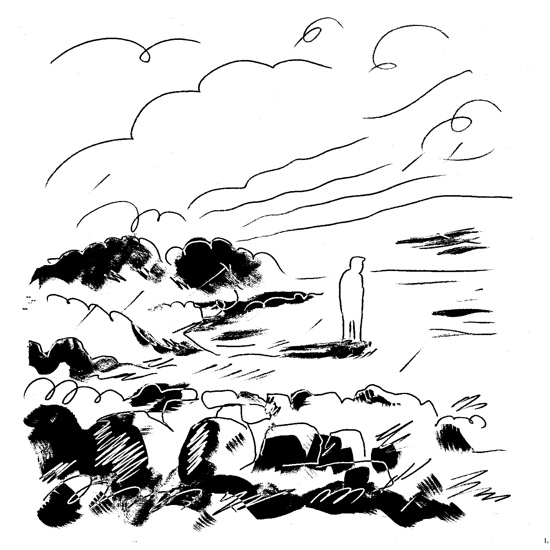
Where?, which you started in Minor Leagues 6, is shaping up to be the strongest work of yours I’ve read, and a lovely tribute to your father. What are you hoping to achieve with this piece?
Where? is about coming to terms with Dad’s death by coming to terms with one of the big questions I have about myself: where am I from? The book, which I’m serialising in four parts in Minor Leagues, is an account of my Dad’s illness and death, tied into a memoir about growing up in some fairly ancient British countryside, and an account of the history, and folklore of the place. It’s a combination of prose, comics, drawings, photos, found archival texts, that sort of thing. It’s about rural Shropshire, where I lived between 4 and 11 years old. I lived in a village called Caynham that had a tiny school, a turkey hatchery, an abandoned mansion, and a bunch of houses. There was an Iron Age hill fort at the top of my road.
My Dad was a radar engineer on Titterstone Clee, the third highest hill in Shropshire. On a clear day you have an unbroken view – in theory – of the Urals in Russia. That hill has had thousands of years of use and reuse by humans, from the Neolithic, through to Bronze Age ritual sites and Iron Age settlements, medieval coal mining, Victorian quarrying, and post-war radar tracking. It’s an absolute statement of how the natural world and the human hand are part of the same equation.
The book also has an undertow of trying to work out what it means to be ‘of the countryside’ right now in our shitty bit of political history; I’m fairly sure that bit of Shropshire predominantly voted ‘Leave’ in the EU referendum, and I’m fairly sure they had their reasons, however much I disagreed with them. The countryside is a contested idea at the best of times – whether seen as the poor cousins of the city, the realm of the landed gentry, the salt of the earth, the mystic space at the end of a suburb where we can go find ourselves, some tranquil, atemporal oasis. On the one hand, that’s all bollocks; these are cultural and political archetypes of a landscape in which real people are being forgotten while their pastoral representations are traded as markers of historical or national identity.
Then again, on the other hand, these archetypes are sort of accurate, and to me there is something magical about connecting to the mud and grass and soil, being alone in the countryside, being in the sun. But it’s a human thing. It’s not a ‘back to nature’ thing. I’m walking where people walked before, and all I see around me is a consequence of the impact and counter-impact of those footsteps.

